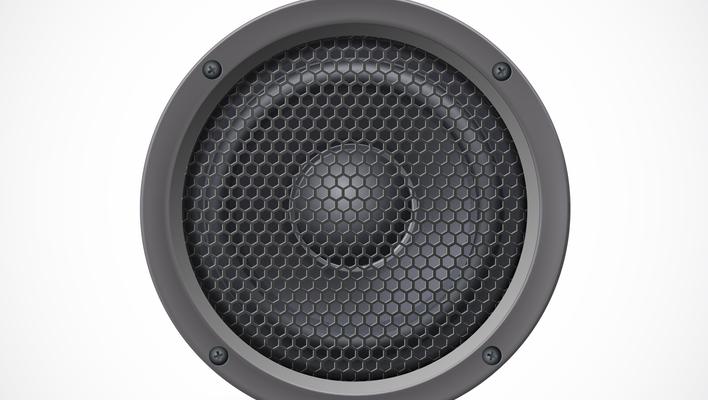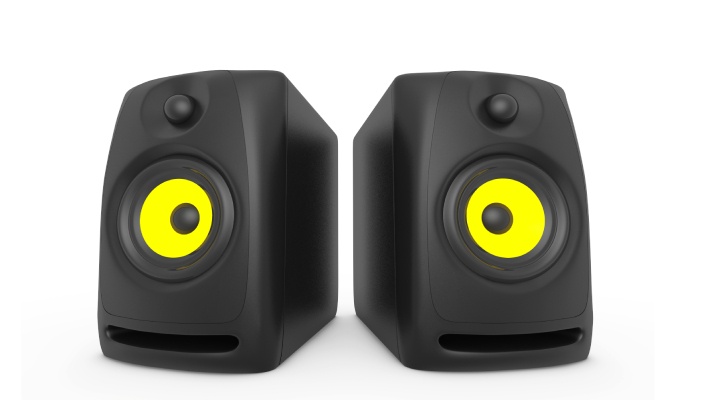People often use the terms subwoofer and woofer interchangeably. And this is wrong because even though these two large speaker systems seem identical and mainly play the low-frequency sounds, kicks, and drops in music, they are completely different in terms of design, cost, size, efficiency, and how they do what they were made to do.
A woofer is a specialized loudspeaker that reproduces low-frequency sounds. On the other hand, a subwoofer is a specialized woofer that handles a narrower frequency range. Woofers produce low-frequency sounds ranging from 40 Hz to 2500 Hz, while subwoofers play frequencies in the 20Hz to 200Hz range.
The difference in their frequency range, make, and model makes each system ideal for different occasions. This article aims to help you understand these speaker systems better by providing an in-depth explanation of what they entail, their differences and when to use each.
What Is a Subwoofer?
A subwoofer is a single driver loudspeaker designed to reproduce low frequency sound in the range of 20 Hz to 200 Hz. Its history dates back to the late 1960s where it was widely used in home stereo systems. It was later introduced to the commercial market after the historical disaster movie, Earthquake of 1974. Since then, subwoofers have become an essential part of the entertainment industry and home audio.
They are of two different types of subwoofers, i.e., active subwoofers and passive subwoofers. Active subwoofers refer to those that contain an inbuilt amplifier, while passive subwoofers are those that don’t have one. Subwoofers are large in size and most have a box-like shape. They come enclosed in either ported or sealed enclosures whose work is to tune the performance. These devices also contain radiant that helps in controlling the pressure levels.
Subwoofers are ideal for movie theaters and concert halls where low bass sound waves need to be reproduced accurately without distortion.
How a Subwoofer Works
When you connect a subwoofer to an audio receiver or preamplifier, it receives the low-frequency signals carried by an electrical current. The subwoofer amplifies this electrical current through a magnetic coil and converts it into audible sound. During the conversion, the driver’s cone vibrates back and forth and sends enriched, juicier bass in all directions.
What Is a Woofer?
You probably didn’t know this, but the woofer’s name comes from a dog’s, “woof.” Woofers are a class of loudspeaker drivers designed to handle low and mid-pitched audio frequencies from 40 Hz to 2500 Hz. They are ideal for radios, televisions, home theaters systems, car audio systems, and sound cards for computers.
How a Woofer Works
Like other speakers, woofers are generally meant to convert electrical signals into sound. They work hand in hand with other drivers such as tweeters to produce mid-range frequencies in home stereos.

Woofer driver cones are made using plastic, metal or paper material. This makes it easy for the cone to move back and forth through an electromagnetic process.
Under this process, the current passes through the voice coil, causing a back and forth movement that pushes the speaker cone to move in and out, resulting in the low-frequency sound.
Differences Between a Woofer and Subwoofer
Woofers produce more comprehensive frequencies than subwoofers, which are designed to handle narrow frequency ranges.
Subwoofers are naturally larger in size than woofers. This enables them to work perfectly in producing the lower frequencies as the large cone surface area and magnificent magnet drive a massive volume of air.
Woofers are multiple drivers’ devices. They can fall between two ways where they will have a woofer and a tweeter, three ways comprising a woofer, midrange driver, and a tweeter or four-way driver pacts consisting of the woofer, midrange driver, a tweeter, and a super tweeter. In contrast, subwoofers are only single driver devices.
Woofers and subwoofers also \ differ in power consumption. A subwoofer requires more energy to reproduce the lowest frequencies than a woofer.
Woofers generally contain a single speaker driver inside an enclosure. In contrast, subwoofers have multiple woofer drivers housed in a large chamber.

Another difference between these two sound systems is in their power mechanisms. You must have an external amplifier or A/V receiver to power a woofer since it’s a passive bass driver. On the other hand, subwoofers are of two different types, i.e., active subwoofers and passive subwoofers. Because of this, their powering is different. You can use the regular external amplifiers to power the passive subwoofers. Active subwoofers have an inbuilt amplifier, but you would have to connect them to a power source for the amplifier to get the needed power.
You may also read: How to Connect Passive Subwoofer to Receiver
Subwoofers have an inbuilt crossover, and by tuning the phase settings, you can get cleaner. Unfortunately, this feature is not available in most woofers.
Another factor differentiating a suwoofer from a woofer is their sound quality capability. The narrow frequency in subwoofers makes it possible for them to produce fine and tight sounds, which is impossible with the woofers.
Subwoofer vs. Woofer: Which is Better?
Subwoofers and woofers have their advantages and disadvantages. Just do your thorough research before everything else. Consider your needs, budget, available space and power, and the kind of musical experience you desire before making your final decision.
Also Read: How To Install a Home Theater Subwoofer in a Car
A subwoofer will, for example, demand more power and space than a woofer but still deliver clearer, fuller, and tighter bass than its counterpart. In addition, a subwoofer offers flexibility on placement since the low frequencies are not directional and can work well in different locations.
On the other hand, a woofer is energy efficient, offers a broader frequency range, and requires less space. Take your time and examine the kind of music experience you need before settling on any of these speaker devices.
